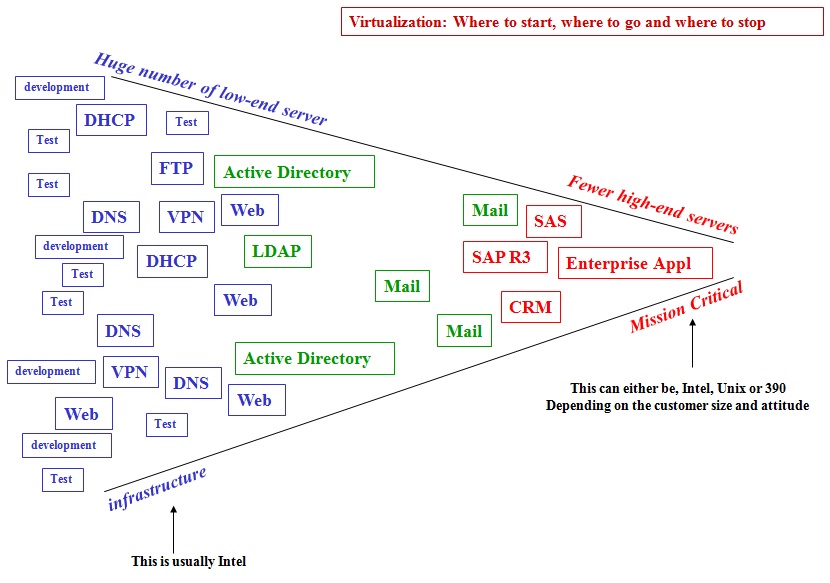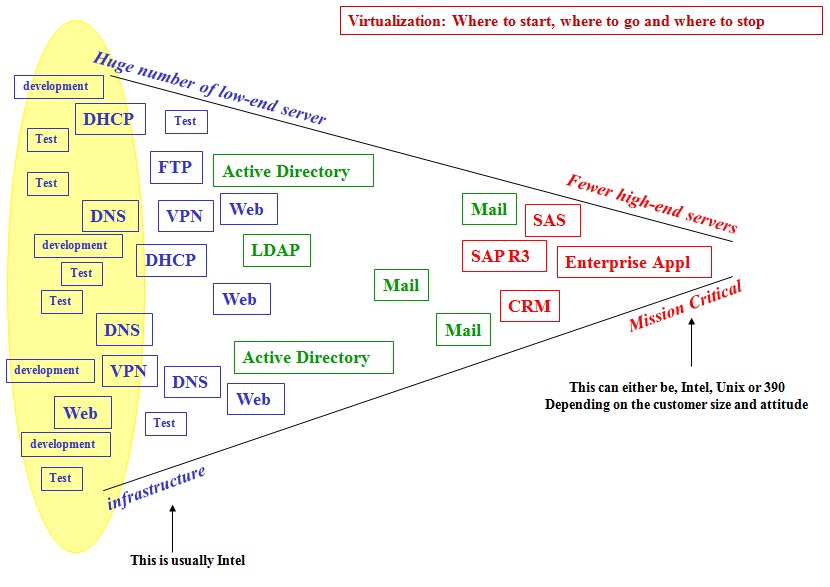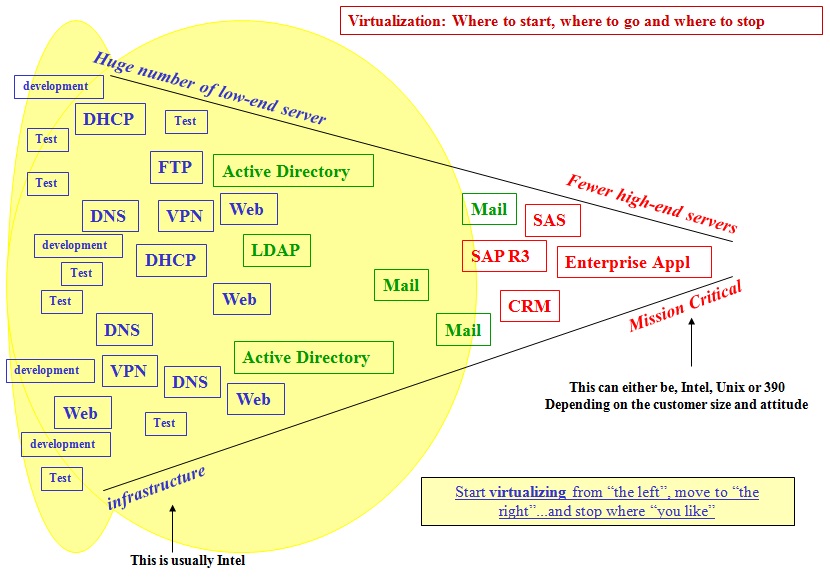Public Cloud Adoption Curve – is History Repeating?
This article was originally posted on the VMware vCloud corporate blog. I am re-posting here for the convenience of the readers of my personal blog.
As I mentioned in my previous post I started working on virtualization technologies years ago. It was around 2003 when I started talking, at public events, about what one could achieve using VMware ESX (which at that time was the only VMware offering for the enterprise market). I still remember the very first two questions I got asked in one of those events that year. The first one was "wow, does it really work?" Answer: "Yes, it does indeed". The second question I got asked was, "Can I virtualize SAP"? The answer in 2003 was a no brainier and it was something like, "We don't want you to virtualize the SAP instance. We want you to virtualize the 20 plus infrastructure servers you have sitting around it that support that SAP instance because they are what cause you so much trouble".
For the next event, I decided that I should anticipate the "what is virtualization good for?" and "where do I start with it?" type of questions so I built the following slides to give the audience a rough idea of where (and why!) these technologies would fit.



For years I have pitched a typical datacenter deployment as a pyramid on the side where, on the left, we have many instances of dynamic, non-critical, non-resource intensive types of workloads. Test and development environments are a good example. As we move to the right, workloads start becoming less dynamic, more critical, and more resource intensive. The SAP instance above would be a good example of what sits on the other side of this spectrum. In the middle we have a broad mix of infrastructure, tier 2 and tier 3 types of workloads, each of which comes with various infrastructure requirements.
As you can tell from my graphics above, the virtualization adoption model I was suggesting was pretty straightforward: "start from the left, move to the right and stop where you like". This slide was built in 2004 and could still be used in 2010. I think this adoption model made tons of sense at that time for many specific reasons:
-
Organizations were losing control of the left part because of the many little workloads that were popping up every other day without any sort of governance (virtualization helped a lot with consolidation and containment);
-
Organizations were not dynamic enough on the left part because the deployment lead time for physical servers was too long (virtualization helped a lot with the concept of "your new server is 3 clicks of mouse away");
-
Organizations were happy to introduce new innovative technologies on the left part because it was less critical compared to the part on the right side of the pyramid.
In a way, this was a win-win. The advantages of this solution were an excellent fit for the characteristics of the dynamic workloads on the left side and the limitations of this solution (limited enterprise maturity with associated risks) weren't really an issue for those types of non-critical workloads. Well, you know what happened next. End-users started this "journey" and there are now many organizations that are running SAP virtualized.
That was the picture in 2003. How about now in 2010? As I started working more closely on public IaaS cloud aspects, I have heard many concerns and doubts that reminded me of those questions I was getting back in the early years of this century. Can I move my core business application out there in the cloud? How can I ensure that my own customers' data are protected? Well I am sorry to rain on the party but, honestly, I don't believe these will be the first workloads to move into the public IaaS cloud.
First, there is a technology argument. We are still talking, by and large, about early offerings in the public cloud space. Similar to what happened with ESX and with the overall virtualization ramp-up, we will see technical improvements in public cloud offerings that will make it easier to migrate critical workloads onto future stages of the IT infrastructure. This doesn't mean ESX wasn't initially an enterprise-grade product. In fact, I worked with a number of customers that were moving relatively important workloads on to that platform, but arguably vSphere is a better and more mature technology.
Other than that, we can't ignore another, probably more important, fact. Organizations will want to take the time to learn what the public cloud is and will gradually move workloads there. Most of them recognize the value of doing so in the same way that they recognized the value of VMware ESX 1.0 when they first saw it. This doesn't mean they jumped onto it overnight to migrate their core apps.
No matter how good the technology is (and while there is space for improvement, it is good indeed) it will take time. You may want to call it "fear of the unknown" or "risk management," but we need to accept it for what it is. You will probably see me using these slides again in 2010. I will just need to change the title to "The Public Cloud (likely) Adoption Curve".
Massimo.